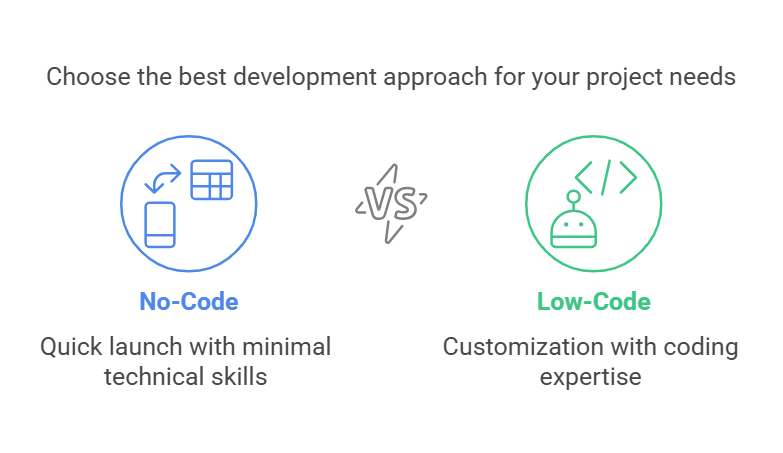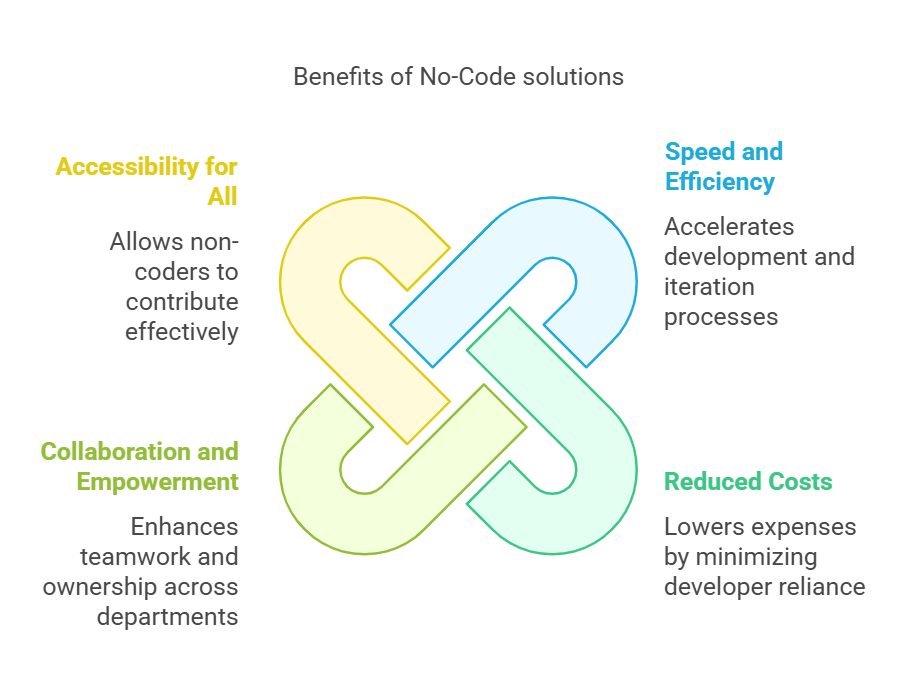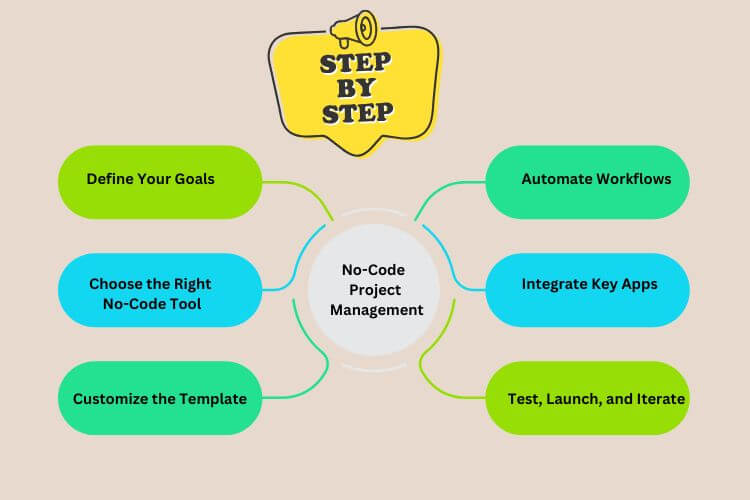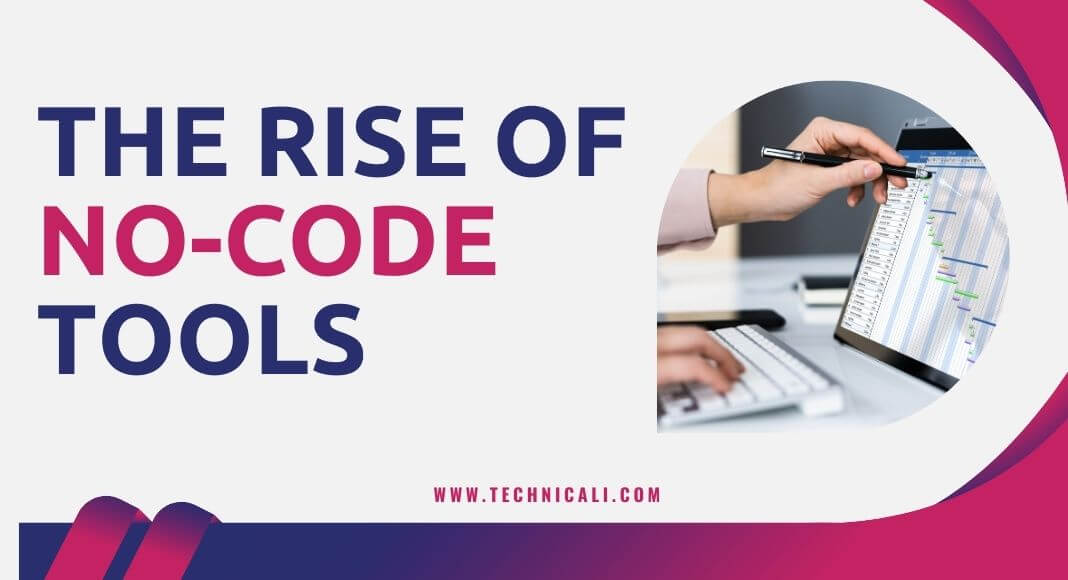According to Gartner’s recent research, by 2025, 70% of new apps built by enterprises would use low-code or no-code technologies, up from less than 25% in 2020. Why such a dramatic shift? Because no-code approaches offer unprecedented speed and flexibility, allowing teams of all sizes to build something truly impactful without writing a single line of code. In this blog post, we’ll dive deep into the world of no-code tool adoption, highlight its benefits, and illustrate how it can empower any manager, including non-technical ones, to streamline project management.
Contents
- 1 Introduction: Why No-Code Matters for Project Management
- 2 No-Code vs. Low-Code: Understanding the Difference
- 3 Key Benefits of No-Code Solutions for Product Managers
- 4 How No-Code Tools Empower Product Teams
- 5 Best No-Code Tools for Product Management
- 6 Step-by-Step Guide to Building a No-Code Project Management Platform
- 7 Real-World Use Cases: Streamlined Workflows and Rapid Prototyping
- 8 Overcoming Common Objections: Adopting No-Code in Your Organization
- 9 The Future of No-Code in Product Management
- 10 Conclusion: Taking Your Project Management to the Next Level
Introduction: Why No-Code Matters for Project Management
Embracing the No-Code Revolution
No-code is a transformative solution that allows teams to develop prototypes of digital products, internal tools, and even mobile apps without having to write any actual code. While low-code tools have gained traction for bridging the gap between coding experts and novices, no-code tools extend accessibility even further, removing the barriers to coding skills altogether.
This dramatic change in software development opens new doors for the non-technical manager, reducing dependency on large engineering teams and allowing managers and marketers to take the reins. The benefits of no-code include faster product development, shorter iteration cycles in project management, and the ability for teams of all sizes to innovate rapidly. A modern no-code platform can help you customize workflows, build internal dashboards, or craft entire web development solutions, often within days rather than weeks.
Technicali Actionable Tip: If you’re eager to build something quickly, platforms that allow product managers to create websites and apps without writing a single line of code can jumpstart your development process. Example: Cursor, v0, Lovable, Claude with MCP. Whether you’re looking to improve data management or create a product analytics dashboard, no-code tools are worth exploring.
How the No-Code Movement Took Off
The rise of AI tools and advanced development tasks has revolutionized no-code capabilities. Early innovators in no-code development, from small startups to major enterprises, discovered that visual development tools significantly reduce overhead. Communities of no-code developer enthusiasts began to share template resources on sites like Airtable and Google Sheets, accelerating adoption. This collaborative culture ignited a wildfire of popularity, pushing the boundaries of what’s possible without needing to code.
No-Code vs. Low-Code: Understanding the Difference

Decoding Low-Code and No-Code Tools
While no-code and low-code are sometimes talked about in parallel, they possess distinct abilities. With no code, you don’t have to write code, which is useful in getting your digital product live with little to no technical expertise but relies on drag-and-drop interfaces and intuitive workflows. Low code involves you writing code, especially when working on some of the integrations or specialty features.
Product managers can leverage both approaches to streamline app integrations, quickly release prototype functionalities, and adapt to evolving requirements. While low-code development might suit organizations with specialized needs, pure no-code options ensure that technical overhead remains minimal.
Why Low-Code Still Matters
Some businesses require deeper customizations. Here, low-code solutions offer the sweet spot: mostly visual development with the option for partial custom code solutions. Hybrid models; where no-code and low-code converge, are emerging as powerful ways to accommodate advanced scenarios. For instance, a complex financial organization might harness code tools to link multiple systems while relying on a no-code interface for day-to-day project management tasks.
Key Benefits of No-Code Solutions for Product Managers

Benefits of No-Code
Speed and Efficiency
No doubt, it stands out with the agility it provides. No code dramatically accelerates your development process, thereby allowing product managers to create and iterate on digital product prototypes quickly. It is how you can roll out updates and new features without traditional development cycles in a project management framework.
Reduced Costs
Internal developers are expensive to rely on, especially for small organizations. Non-technical employees can directly engage with development tools using no-code frameworks, minimizing resource allocation. Teams can create tools for operations, marketing, or finance at a fraction of the cost and plow that money into more strategic initiatives.
Collaboration and Empowerment
This tool empowers the product team to remove bottlenecks in work. Thus, without any requirements for higher-end coding expertise, entire departments ranging from product leaders to entry-level marketers collaborate to design solid internal workflows, which tends to increase productivity and a shared sense of ownership.
Accessibility for All
Managers and marketers who don’t know how to code can still implement powerful features. This inclusive approach brings fresh perspectives into software development, enabling real-time experimentation. In turn, you get quick wins in product analytics, workflow simplification, and improved data visibility across departments.
How No-Code Tools Empower Product Teams
Tools Empower Product Managers and Teams
Leveraging Automation and AI
Modern no-code tool ecosystems are rife with automation capabilities. Integrated AI modules can execute tasks that once demanded a specialized data science team like predictive analytics or advanced product analytics. As a result, your product team gains actionable insights without major overhead, freeing them to focus on strategic management decisions instead.
Faster Iterations and Testing
Striking a balance between ambition and execution becomes simpler with no-code tools for product managers. Quickly prototype new ideas, gather feedback from stakeholders, and refine in near-real time. In many cases, a prototype can be built and tested in a few hours rather than weeks.
Increased Team Autonomy
Forget long delays waiting for code reviews or dev sprints. By removing these layers of complexity, product managers can update workflows and user interfaces on the spot. An agile environment emerges, encouraging swift pivots and fostering a high-performance culture in project management.
Best No-Code Tools for Product Management

Best No-Code Tools
Airtable
An excellent no-code tool for a product manager looking for a database-style interface is Airtable. It has a robust template library and project timeline and integrates well with other apps like Slack or GitHub. It is important to look at data management: you can sort, filter, and link records with ease.
Monday.com
A project management powerhouse that incorporates visual boards, team collaboration functions, and comprehensive workflow customization. Its range of app integrations (CRM, file storage, email) is vast, making Monday.com a flexible choice for cross-functional teams looking for a single project management platform.
ProofHub
Another versatile no-code tool option for teams seeking a unified workspace. ProofHub excels at project management by combining tasks, discussions, and file-sharing within one interface. Users can also create custom workflow stages to reflect different project phases, enabling product managers to oversee progress and collaborate effortlessly across departments.
Notion
Popular for its minimalist yet powerful interface, Notion is a no-code all-in-one workspace that brings notes, wikis, and project boards together. It offers a wide range of templates for everything from sprint planning to content calendars, making it easy for managers to build something tailored to their team’s needs. Notion’s intuitive structure and app integrations streamline daily operations while reducing context switching.
Bubble
For full-scale mobile app or web application development, Bubble shines as a no-code platform. It provides a user-friendly canvas, letting product teams drag and drop components and define workflow logic without writing a single line of code.
Webflow
Well-known in the web development sphere, Webflow merges robust design features with no-code functionalities. Ideal for creating custom landing pages, marketing sites, or partial internal tools that maintain high design fidelity.
Technicali Pro Tip: If you’re seeking the best no-code solution, evaluate each tool for product analytics, scalability, and relevant template offerings. Finding the best no-code tools for your project management needs involves testing them hands-on and determining which aligns best with your organizational goals. After setting up your project management platform it’s essential to evaluate if they provide API endpoints and automation nodes that you can connect with workflow automation platforms like n8n, zapier, make, or its alternatives. As having integration with them opens up a lot of low-code workflows that will benefit the entire organization.
Step-by-Step Guide to Building a No-Code Project Management Platform

No-Code Project Management in Action
Step 1- Define Your Goals
Identify core pain points and the solution you plan to deploy. Do you intend to automate workflow approvals, build a new user portal, or simplify finance reports? Clear objectives will tell you a lot about how you should choose your development platform.
Step 2 – Choose the Right No-Code Tool for Your Product Team
Integration, user interface, and analytics will be the next items to consider. For example, if product managers need robust product analytics capabilities in a platform, ensure your no-code suite accommodates that.
Step 3 – Customize the Template
Most no-code tools for setting up products include built-in templates that you can customize. The beauty of tools made specifically for processes is that you can fine-tune the fields, statuses, and roles to suit your design and development processes best.
Step 4 – Automate Workflows
Leverage automation or AI tools to handle mundane chores like auto-assigning tasks or generating notifications. By reducing manual intervention, you help product managers streamline everyday duties and keep their development tasks on track.
Step 5 – Integrate Key Apps
Your project management tool must sync seamlessly with CRMs, marketing software, or finance trackers. This platform helps unify data and ensures minimal duplication and real-time visibility across different teams.
Step 6 – Test, Launch, and Iterate
A pilot group should be gathered to experiment with the system. Feedback from usability, performance, and ROI should be sought and iterated continuously. The beauty of no-code is the ease of making swift updates without any coding rework.
Real-World Use Cases: Streamlined Workflows and Rapid Prototyping
Showcasing the Power of No-Code Tools
A large marketing agency recently reported a 72% of IT leaders now say project backlogs prevent them from working on strategic projects. By building a custom workflow and connecting it to their existing CRM, they replaced a dozen spreadsheets and manual tasks, lowering overhead and boosting operational transparency.
Rapid Prototyping for Mobile Apps
For teams wanting to roll out mobile apps without an in-house development team, no-code software development platforms like Bubble or Glide can accelerate launch timelines. This approach grants you more room for user testing, ultimately enhancing user experience before you invest in a bigger launch.
Overcoming Common Objections: Adopting No-Code in Your Organization
Addressing Resistance to Change
Myth 1 – No-Code Tools Aren’t Scalable
Modern no-code technology handles complex logic, large databases, and advanced app integrations. As your organization grows, you can expand processes in tandem; no dramatic re-platforming is required.
Myth 2 – We Need a Technical Specialist for Everything
No-code dramatically reduces the need for niche technical skills by offering straightforward visual interfaces. Product managers can configure processes without needing to bring in specialized devs for each minor tweak.
Implementation Best Practices
- Pilot project: Start small to showcase quick wins, build internal credibility, and reduce risk.
- Training: Provide your team with resources so that even the most non-technical employees can use the platform effectively.
The Future of No-Code in Product Management

The Future of Product Development
No-Code and Low-Code Convergence
Experts predict that no-code and low-code platforms will fuse, offering robust customization and simplified drag-and-drop features. This future of product creation heralds flexible, dynamic options for businesses seeking end-to-end project management solutions.
AI Integration and Automation
AI will evolve from simple chatbots to advanced data pattern recognition. By combining code solutions where needed with AI-infused no-code interfaces, organizations can build intelligent workflows that respond to real-time triggers.
Expanding Use Cases
We’re already seeing no-code applications. We’ve applied beyond traditional SaaS, from AR/VR prototypes to software development in IoT. As adoption grows, industries like healthcare, finance, and education will also rely on low-code or purely no-code solutions to transform operations rapidly.
Conclusion: Taking Your Project Management to the Next Level

Final Thoughts
The rise of no-code tools underscores an exciting shift toward inclusivity and velocity in project management. By putting the power of innovation in the hands of a product manager or an otherwise minimally technical manager, you’re opening the door to allow your whole product team to build something truly transformative without ever writing or necessarily needing to code. This alone can minimize cost and ignite culture through collaborative problem-solving.
Ready to explore the best no-code tools for your own no-code project management initiative? Dive into platforms like Airtable, ProofHub, Notion, Webflow, Bubble or Monday.com and let them guide you toward enhanced efficiency and faster deployments.
If you found these insights helpful, feel free to share this post with your colleagues or someone with whom you can continue discussions on no-code approaches. By doing so, you help others discover how no-code tools for product managers can reshape the future of project management, and you join a growing community that believes in innovation without needing to code.


